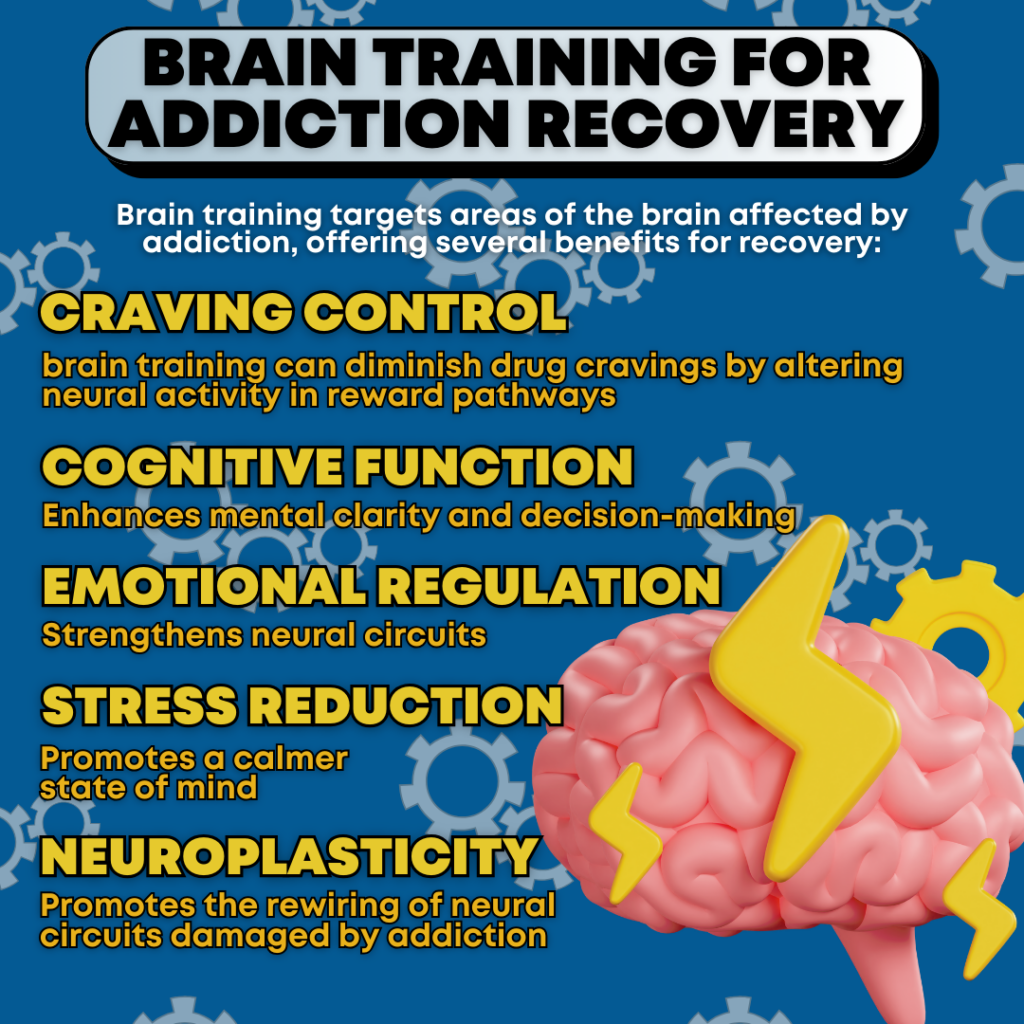Harnessing Brain Training to Aid Addiction Recovery
Addiction is a complex and devastating condition that affects millions of individuals worldwide. Whether it be substance abuse, porn, gambling, or other behavioral addictions, the impact on both mental and physical health can be profound. Traditional approaches to addiction treatment often involve therapy, support groups, and medication, but there’s an emerging field that offers a promising avenue for recovery: brain training.
Understanding Addiction and the Brain
Addiction is characterized by compulsive engagement in rewarding stimuli despite adverse consequences. It hijacks the brain’s reward system, altering neurotransmitter levels and neural pathways. Regions such as the prefrontal cortex, amygdala, and nucleus accumbens are heavily involved, influencing decision-making, impulse control, and emotional regulation.

How Brain Training Works
Brain training, also known as cognitive training or neurofeedback, involves exercises designed to enhance specific cognitive functions. It can include activities like puzzles, memory tasks, and attention exercises. Neurofeedback utilizes real-time monitoring of brain activity, allowing individuals to learn to self-regulate their neural patterns.
Supporting Addiction Recovery
Brain training targets areas of the brain affected by addiction, offering several benefits for recovery:
1. Neuroplasticity
The brain’s ability to reorganize and form new neural connections is crucial for recovery. Brain training stimulates neuroplasticity, promoting the rewiring of neural circuits damaged by addiction.
2. Cognitive Function
Addiction often impairs cognitive abilities such as memory, attention, and executive function. Brain training exercises these cognitive skills, enhancing mental clarity and decision-making, which are vital for resisting cravings and making healthier choices.
3. Emotional Regulation
Addicts frequently struggle with managing emotions, leading to relapse triggers. Brain training can help regulate emotional responses by strengthening neural circuits associated with emotion regulation, reducing susceptibility to stress and cravings.
4. Stress Reduction
Chronic stress exacerbates addiction and hampers recovery efforts. Brain training techniques, particularly mindfulness-based practices, can lower stress levels by modulating activity in stress-related brain regions, promoting a calmer state of mind conducive to recovery.
Craving Control
Research suggests that brain training can diminish cravings by altering neural activity in reward pathways. By weakening the association between triggers and addictive behaviors, individuals can gain greater control over their impulses.
Integration with Traditional Therapies
Brain training is most effective when integrated into a comprehensive addiction treatment plan. It complements traditional therapies such as counseling and medication by addressing underlying neurological factors. Combining approaches offers a holistic approach to recovery, addressing both the psychological and physiological aspects of addiction.
Challenges and Considerations
While brain training shows promise, it’s not a panacea for addiction. Success depends on various factors, including the individual’s commitment, the severity of addiction, and access to resources. Additionally, more research is needed to determine the optimal protocols and long-term efficacy of brain training for addiction recovery.
Conclusion
In the battle against addiction, harnessing the brain’s innate capacity for change is a powerful ally. Brain training offers a novel approach by directly targeting neurological mechanisms underlying addiction. By promoting neuroplasticity, enhancing cognitive function, and fostering emotional resilience, it holds the potential to facilitate lasting recovery. As our understanding of the brain continues to evolve, integrating brain training into addiction treatment protocols may become increasingly commonplace, offering hope for those struggling to break free from the grip of addiction.


